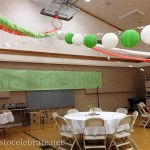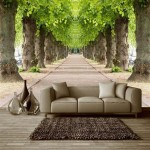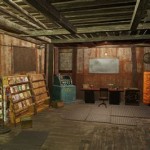How To Decorate a Child's Small Bedroom
Decorating a small bedroom for a child presents a unique set of challenges. The limited square footage demands thoughtful planning and creative execution to maximize functionality and create a comfortable, inspiring space. The objective is to avoid a cluttered, overwhelming environment and instead design a room that feels spacious, organized, and reflects the child's personality.
Before commencing any decorating project, it is crucial to assess the existing space. Measure the room accurately, noting the location of windows, doors, and any built-in features like closets or alcoves. This information will form the basis for furniture selection and placement, ensuring that everything fits comfortably and does not obstruct movement. Consider the child's age and needs, as these will influence the types of furniture and storage solutions required. A toddler's room, for example, will necessitate different elements compared to a room designed for a pre-teen.
Prioritize Multi-Functional Furniture
In a small bedroom, every piece of furniture should ideally serve multiple purposes. Selecting furniture that combines storage with other functions is essential for maximizing space and minimizing clutter. For instance, a bed with built-in drawers underneath offers valuable storage for clothing, toys, or bedding. Alternatively, opt for a platform bed with a lift-up mattress to reveal a larger storage area. A desk with integrated shelving or drawers provides a workspace while also offering storage for books, art supplies, or other items.
Another excellent choice is a daybed, which can function as a sofa during the day and a bed at night. This option is particularly useful in smaller rooms where creating a separate seating area is impractical. Consider a loft bed if the ceiling height allows. The space underneath the loft bed can be transformed into a study area, a play zone, or additional storage. Folding or stackable furniture, such as chairs or tables, can be easily stored away when not in use, freeing up valuable floor space.
When choosing furniture, pay attention to its scale. Overly large furniture can quickly overwhelm a small room, making it feel cramped and claustrophobic. Opt for furniture that is appropriately sized for the space, ensuring that there is ample room to move around comfortably. Consider wall-mounted shelves or cabinets, which take up no floor space and provide valuable storage. Floating shelves are an excellent way to display books, toys, or decorative items without taking up valuable surface area.
Durable and easy-to-clean materials are recommended for children's furniture. Fabrics should be stain-resistant and washable, and finishes should be durable enough to withstand daily wear and tear. Consider rounded edges and corners on furniture to minimize the risk of injury, especially for younger children.
Maximize Vertical Space
In a small bedroom, utilizing vertical space is crucial for creating storage and visual interest. Walls are valuable real estate that should not be overlooked. Tall bookshelves, shelving units that reach the ceiling, and wall-mounted storage solutions can significantly increase storage capacity without occupying floor space.
Install shelves at varying heights to accommodate different items. Higher shelves can be used for storing less frequently used items, while lower shelves can be used for displaying books, toys, or decorative objects that the child can easily access. Consider using baskets or bins on shelves to contain smaller items and keep the space organized. Labeling these containers can help the child learn to put things away in their designated places.
Wall-mounted organizers, such as pegboards or wire grids, can be used to hang accessories, art supplies, or small toys. These organizers provide a flexible and customizable storage solution that can be adapted to the child's changing needs. Hooks can be used to hang clothing, backpacks, or towels, freeing up space in the closet.
Mirrors can be strategically placed to create the illusion of more space. A large mirror on a wall can reflect light and make the room feel brighter and more open. Consider placing a mirror near a window to maximize the amount of natural light reflected into the room. Wall decals or murals can add visual interest and personality to the room without taking up any space. Choose decals that reflect the child's interests or hobbies, such as animals, sports, or fantasy creatures.
Utilize the space above the closet by installing shelves or storage bins. This area is often overlooked, but it can provide valuable storage for seasonal clothing, extra bedding, or other items that are not needed on a daily basis. Consider using clear storage bins so that the contents are easily visible.
Implement Effective Storage Solutions
Organization is paramount in a small bedroom. Without effective storage solutions, clutter can quickly accumulate, making the room feel even smaller and more chaotic. Implementing a comprehensive storage system that addresses the child's specific needs is essential for maintaining a tidy and functional space.
Closet organization is a critical aspect of bedroom storage. Install adjustable shelves and rods in the closet to maximize the available space. Use hanging organizers to store shoes, accessories, or folded clothing. Consider using matching hangers to create a more uniform and organized look. Baskets or bins can be used to store toys, books, or other items on the closet floor.
Under-bed storage is another valuable resource in a small bedroom. Utilize storage containers or drawers designed to fit under the bed to store clothing, toys, or bedding. These containers keep items hidden away and out of sight, reducing clutter and creating a more streamlined appearance.
Toy storage is a significant concern in most children's bedrooms. Implement a system for organizing toys based on type or function. Use labeled bins, baskets, or shelves to store toys in designated areas. Encourage the child to participate in the organization process to foster a sense of responsibility and ownership. Rotate toys regularly to prevent the child from becoming overwhelmed by the sheer volume of items. Store some toys away in a closet or storage bin and rotate them back into the room periodically to keep things fresh and interesting.
Consider a storage ottoman that can serve as a footrest and a hidden storage compartment. This versatile piece of furniture provides both seating and storage, making it a practical addition to a small bedroom. Encourage the child to declutter regularly to maintain a tidy and organized space. Schedule regular clean-up sessions to go through toys, clothing, and other items and remove anything that is no longer needed or used.
Labeling storage containers is crucial for maintaining order and preventing confusion. Use clear labels to identify the contents of each bin, basket, or shelf. This will make it easier for the child to find what they are looking for and to put things away in the correct place. Consider using picture labels for younger children who cannot yet read.
Incorporate a laundry hamper into the room design to keep dirty clothes contained and prevent them from accumulating on the floor. Choose a hamper that is appropriately sized for the space and easy for the child to use. Encourage the child to put their dirty clothes in the hamper regularly to maintain a tidy and organized room.
Proper lighting is essential in any room, but it is particularly important in a small bedroom. Adequate lighting can make the room feel brighter, more open, and more inviting. Utilize a combination of natural light and artificial light to create a well-lit and comfortable space.
Maximize natural light by keeping windows clean and free of obstructions. Use sheer curtains or blinds to allow sunlight to filter into the room while still providing privacy. Avoid using heavy drapes or curtains that can block out light and make the room feel darker and smaller.
In addition to natural light, incorporate several sources of artificial light into the room. A ceiling light or pendant light provides general illumination, while table lamps and floor lamps offer task lighting for reading, studying, or other activities. Consider using a dimmer switch to adjust the brightness of the lighting according to the child's needs and preferences.
Nightlights are essential for children who are afraid of the dark. Choose a nightlight that is not too bright and that emits a soft, comforting glow. Consider using a plug-in nightlight or a battery-operated nightlight that can be easily moved around the room.
String lights or fairy lights can add a touch of whimsy and charm to a child's bedroom. Hang them around the bed, along the walls, or around a window to create a soft and inviting ambiance. Choose string lights with LED bulbs for energy efficiency and safety.
When choosing paint colors for a small bedroom, stick to light and airy shades. Light colors reflect light and make the room feel larger and more open. Consider using neutral colors, such as white, cream, or light gray, as a base and adding pops of color with accessories, bedding, or artwork.
Avoid using dark or overly saturated colors, as these can make the room feel smaller and more enclosed. If you want to use a darker color, consider using it as an accent color on a single wall or in small doses throughout the room. Use patterned wallpaper sparingly, as it can overwhelm a small space. If you want to use wallpaper, choose a subtle pattern with light colors.

14 Small Kids Room Design Ideas Storage Tips Extra Space

38 Cool Kids Room Ideas How To Decorate A Child S Bedroom

7 Kids Room Decorating Tips To Create A Fun Space

6 Space Saving Ideas For Small Kids Bedrooms Diy Home Decor Your Family

38 Cool Kids Room Ideas How To Decorate A Child S Bedroom

30 Best Kids Room Ideas Diy Boys And Girls Bedroom Decorating Makeovers

50 Kids Room Design Ideas Amazing Bedroom By Livspace

14 Small Kids Room Design Ideas Storage Tips Extra Space

34 Charming Kids Bedroom Ideas For Children S Rooms Of Any Size House Garden

38 Cool Kids Room Ideas How To Decorate A Child S Bedroom







